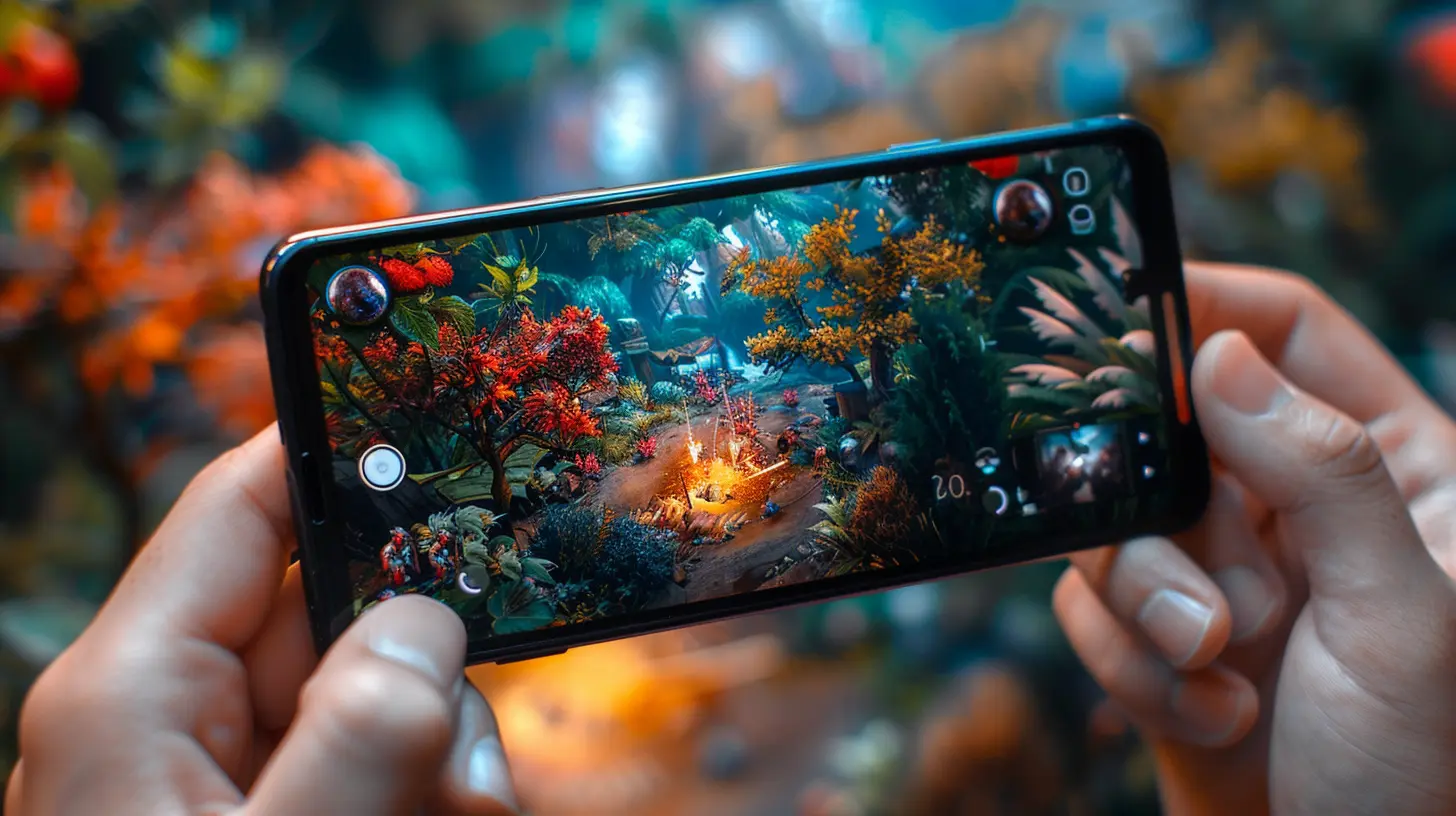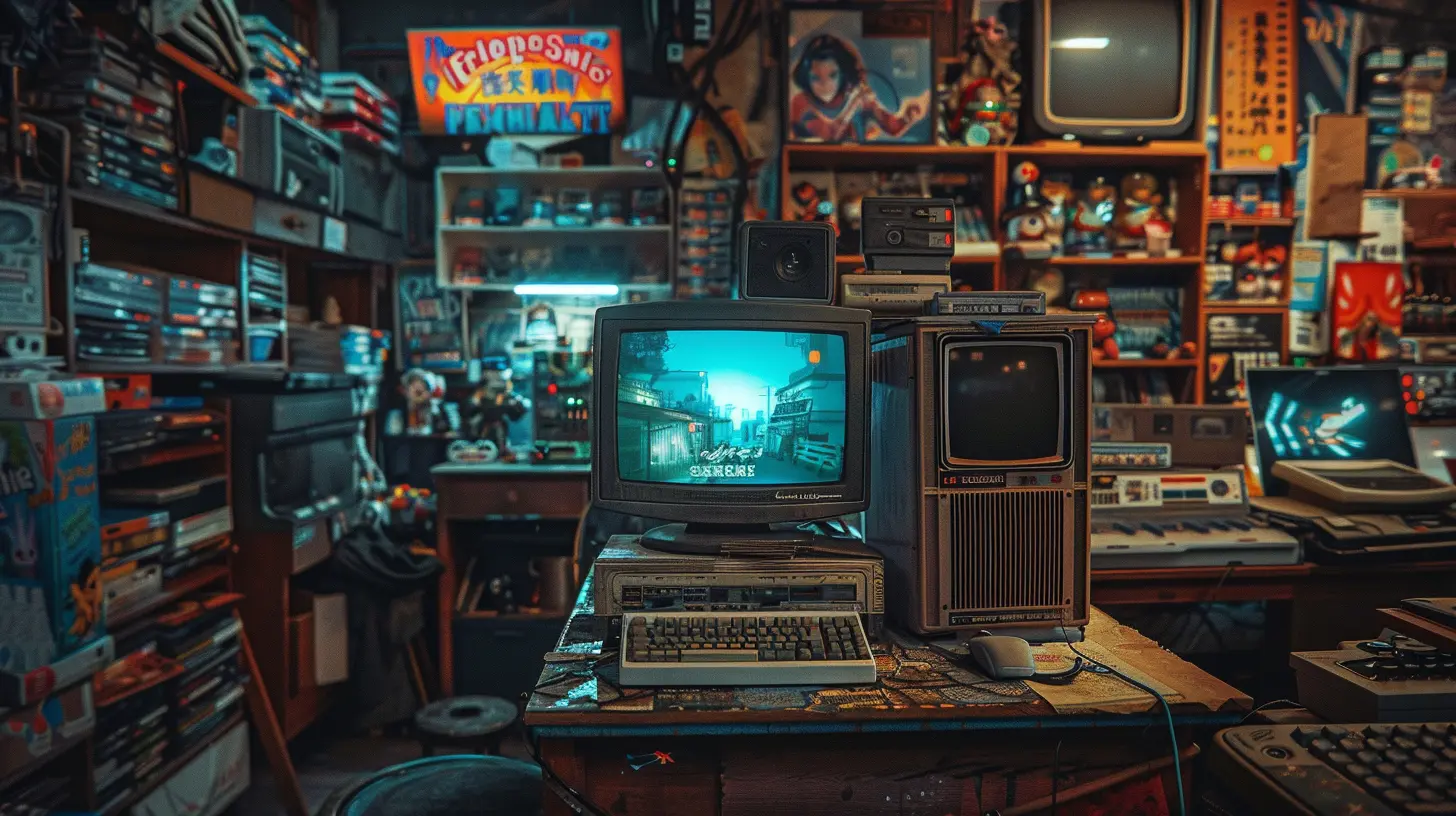4 April 2025
Let’s be real for a second—free-to-play games are everywhere. Whether you're swiping through your favorite mobile app store or browsing PC gaming platforms, there’s a free-to-play game just waiting to grab your attention. These games promise hours of fun without requiring you to slap down your hard-earned cash. Sounds like a win-win, right? But here’s the kicker—nothing in life is truly free. So, how do these games keep the lights on and their developers paid? The answer lies in psychology.
Free-to-play game design isn’t just about creating a fun experience; it’s about understanding your brain and what makes you tick. Developers use psychological principles to craft experiences that are not only addicting but also encourage you to spend money. Intriguing, isn’t it? Let’s dive deep into the psychology behind free-to-play game design and uncover the strategies that make these games so irresistible.
The Hook: Luring You In With Zero Commitment
Have you ever grabbed a slice of free pizza at an office party, even if you weren’t particularly hungry? That’s exactly how free-to-play games reel you in—they’re free! No strings attached, no credit card needed.This tactic plays into a psychological principle called the zero-risk bias. Humans are naturally drawn to options where they perceive no potential loss. By removing the barrier of cost, free-to-play games lower your defenses and make downloading them feel like a no-brainer. You think, "Why not? It’s free!"—and just like that, you’re hooked.
But once you're in, the game starts showing its true colors. Sure, the first few levels are fun and easy, but before you know it, you’re stuck on a level that feels impossible without a little extra “help.” And that’s where monetization kicks in.
The Engagement Loop: Keeping You Coming Back
Ever noticed how hard it is to put down a free-to-play game once you’ve started? That’s by design. Developers use something called the engagement loop to keep you glued to your screen. Here’s how it works:1. Action: You perform an in-game task, like completing a level or defeating an enemy.
2. Reward: You get a dopamine hit in the form of coins, gems, or some shiny loot.
3. Motivation: That sweet, sweet reward motivates you to take action again.
It’s a never-ending cycle that taps into your brain’s reward system, similar to the way social media apps keep you scrolling. By offering frequent (but small) rewards, free-to-play games create a sense of accomplishment that keeps you coming back for more.
Time Gating: The Gift That (Eventually) Gives
Let’s talk about time gating—one of the most genius (and slightly evil) mechanics in free-to-play game design. Time gating limits how much you can play or progress in a game before you have to wait. For example, you might need to wait a few hours for your energy bar to refill or for a building to complete construction.At first glance, it seems like a way to prevent players from binging a game too quickly. But here’s the real deal: time gating is all about creating friction. This frustration nudges players to spend real money to bypass the wait—because who’s got the patience to wait eight hours for a digital treehouse to be built?
Time gating also taps into the scarcity principle. When something is limited—whether it’s time, resources, or access—it suddenly feels more valuable. That little lock icon on your in-game chest? Yeah, it’s there to make you crave that chest even more.
FOMO: The Power of Limited-Time Offers
Speaking of scarcity, let’s talk about one of the most powerful psychological tactics in free-to-play game design: FOMO (Fear of Missing Out). Ever noticed those flashing banners announcing a “limited-time event” or a “24-hour sale” on in-game items? That’s the FOMO effect in action.Developers know that humans hate missing out on opportunities, even if they’re purely digital. By creating a sense of urgency, they push you to make impulsive decisions—like buying that special skin or bundle of coins—just so you don’t feel like you’re missing the boat.
It’s the same logic that makes you feel weirdly stressed about Black Friday sales. You don’t really need that discounted toaster, but it’s on sale NOW, so you just have to grab it.
The Illusion of Choice: Are You Really in Control?
Here’s a sneaky little trick: free-to-play games often give you the illusion of choice. Let’s say you’re trying to earn a rare item. The game gives you two options: grind for hours to earn it (ugh, so tedious) or spend a few bucks and get it instantly. The choice is technically yours, but the design heavily nudges you toward spending money—because who wants to spend 10 hours collecting digital berries?This tactic is all about decision fatigue. When faced with too many tedious or time-consuming decisions, your brain looks for shortcuts. And guess what? Buying a booster pack or extra lives feels like the easiest option.
Social Pressure: Playing With (and Against) Others
Humans are social creatures, and free-to-play games often use social pressure to their advantage. Many games encourage you to join a clan, compete on leaderboards, or send daily gifts to friends. Sounds innocent, right? But there’s a deeper psychological layer at play here.When you see your friend’s name at the top of the leaderboard, it sparks a sense of friendly competition. Suddenly, you’re willing to spend money on power-ups just to beat them. Or maybe your clanmates need you to contribute to a group event, and the only way to do so is by purchasing in-game resources. Social interactions create a sense of obligation that can lead to spending.
Even solo players aren’t immune. Ever felt like you needed to buy a high-level weapon just to keep up with the game’s difficulty curve? That’s the fear of being left behind—a tactic designed to make you feel inadequate unless you spend.
Personalization: Making It Feel Unique to You
One of the most delightful (and lucrative) aspects of free-to-play games is personalization. Whether it’s customizing your avatar, unlocking new skins, or building your dream island, these games make everything feel uniquely “you.” And because you’ve invested time and energy into making it your own, you’re more likely to spend real money to protect or enhance that investment.This taps into the endowment effect, a psychological phenomenon where people value things more once they own them—even if it’s just a digital character wearing a sparkly hat. The more you personalize your experience, the more attached you feel, and the harder it becomes to walk away.
The "Whale" Strategy: Banking on Big Spenders
Here’s a lesser-known fact: most free-to-play games make the bulk of their cash from a small group of players known as whales. These are the players who don’t mind dropping hundreds—or even thousands—of dollars on a game.Game developers often cater to whales by offering ultra-exclusive items and perks that cost a hefty chunk of change. It’s like the VIP section of a concert; most people don’t need it, but for those who can afford it, it’s irresistible.
Interestingly, the presence of whales can indirectly influence other players. Seeing someone with a rare skin or high-level item can spark envy, making you more likely to spend money just to keep up. It’s a cycle that feeds on itself.
In-App Purchases and Microtransactions: The Lifeline
Finally, we can’t ignore the backbone of free-to-play game design: microtransactions. From premium currency to cosmetic items, these small, frequent purchases add up quickly. Developers often price items strategically, offering bundles that feel like “better deals” to nudge you toward spending more.But here’s the wild part: microtransactions aren’t just about profit; they’re about psychology. Once you make your first purchase, you’re more likely to make another. This is known as the foot-in-the-door technique. By getting you to spend even a small amount, the game breaks down your resistance, making future purchases feel less significant.
Conclusion: It’s All About Balance
While free-to-play games often get a bad rap for their monetization tactics, it’s important to remember that they bring joy to millions of players. The key is balance—both for developers and players. If done right, these games can offer genuinely fun experiences without feeling like a money pit.The next time you’re playing a free-to-play game, take a moment to notice the little design tricks that keep you engaged. Once you’re aware of the psychology behind the curtain, you can make smarter choices about how you spend your time (and money).


